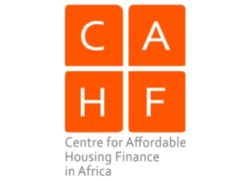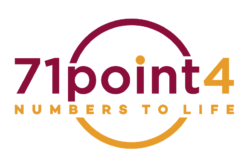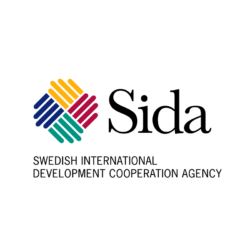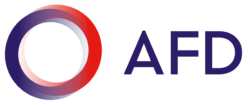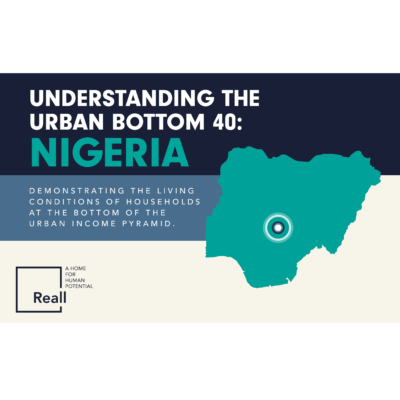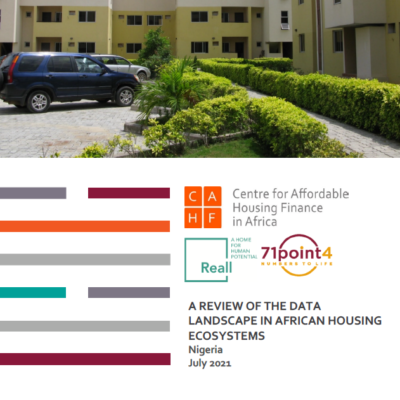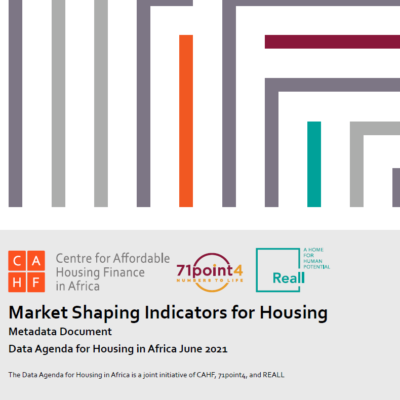Nigeria - Market Shaping Indicators
View Reall projects in NigeriaAs a priority country, in Nigeria Reall is committed to expanding end-user housing finance solutions to 2 million previously excluded low-income and informally employed borrowers by 2025; addressing critical governance, policy, standards and regulatory barriers that impede the market, achieving positive change for 1 million people by 2025; resolving data voids and evidence gaps that have inhibited more effective solutions for affordable housing; and building capacity for low-carbon building, renewable energy and green finance in the affordable housing space. CAHF has been active in Nigeria since 2010, when it published a study on Nigeria’s Housing Sector, in collaboration with Enhancing Financial Innovation and Access (EFInA). More recently, CAHF’s main partner in Nigeria has been the Nigeria Mortgage Refinance Company.
Country Overview
The disruptive impact of COVID-19 is broad, extensive and pervades the entire economic value-chain in Nigeria. This was worsened in the first quarter of 2020 by the crash in oil prices to its lowest levels in decades. The combination of the reduced forex earnings through the oil sector, pressure to service external debt and the continued pandemic environment has contributed to the challenge of housing in Nigeria.
The widening gap between the housing demand and supply is caused by a multiplicity of factors including land acquisition, high cost of building materials, scarcity of accessible affordable housing finance and lack of proper land regulation and policy. The Nigerian government in its efforts to ameliorate the negative impact of the pandemic and oil crisis, revised the Economic Sustainability Plan (ESP) to provide appropriate and sustainable solutions for the country. Family Homes Fund (FHF) has recently been appointed by the CBN to manage the execution of the social housing component of the ESP that is expected to produce 300,000 additional units each year.
State of Housing Data
Over the last twelve months, there has been a general consensus towards improving the sharing of data within the sector. Following the partnership engineered by the Real Estate Developers Association of Nigeria (REDAN) with both government and private sector players including the Federal Mortgage Bank of Nigeria (FMBN), Nigeria Mortgage Refinance Company (NMRC), Central Bank of Nigeria (CBN), National Bureau of Statistics (NBS), Nigeria Population Commission (NPopC), Pison Housing Company, Value Chain Mortgage Affordability Platform (VC-MAP) and many others. The Housing Market Information Portal (HMIP) has been designated as a primary data repository for the sector, hosted by the NMRC.
Text on this page is based on the MSI Nigeria Country Profile ¹, drawn from Centre for Affordable Housing Finance (2020). Housing Finance in Africa Yearbook: 11th Edition 2020 ², with additional content from CAHF and Reall.
Key Indicators
1. Land & Infrastructure
% of urban bottom 40 households without access to basic sanitation services
| Country | Year | Data Source | Value |
|---|---|---|---|
| Cote d'Ivoire | 2012 | DHS | 96.5% |
| Ghana | 2014 | DHS | 93.15% |
| Kenya | 2014 | DHS | 88.25% |
| Morocco | 2004 | DHS | 52.05% |
| Mozambique | 2011 | DHS | 95.6% |
| Nigeria | 2018 | DHS | 83.1% |
| Tanzania | 2017 | DHS | 37% |
| Uganda | 2016 | DHS | 94.5% |
| Rwanda | 2016 | National Institute of Statistics Rwanda (NISR) | 13.13% |
| Pakistan | 2018 | The DHS Program | 2.75% |
| India | 2018 | NSSO 76th Round | 0.2% |
2. Construction & Investment
% of urban population living in slums, informal settlements, or inadequate dwellings
| Country | Year | Data Source | Value |
|---|---|---|---|
| Cote d'Ivoire | N/A | ||
| Ghana | N/A | ||
| Kenya | N/A | ||
| Morocco | N/A | ||
| Mozambique | N/A | ||
| Nigeria | N/A | ||
| Tanzania | N/A | ||
| Uganda | N/A | ||
| Rwanda | 2018 | World Bank | 42.1% |
| Pakistan | N/A | ||
| India | 2018 | NSSO 76th Round | 35% |
3. Sales & Rental
Number of residential mortgages outstanding
| Country | Year | Data Source | Value |
|---|---|---|---|
| Kenya | 2019 | Central Bank of Kenya | 27,993 |
| Nigeria | 2019 | NMRC | 32,260 |
| Tanzania | 2019 | Bank of Tanzania and Tanzania Mortgage Refinance Company Limited | 5,460 |
| Rwanda | 2020 | National Bank of Rwanda (NBR) | 44,177 |
| Pakistan | 2019 | State Bank of Pakistan - Housing Finance Data Review | 58,620 |
| India | 2020 | Reserve Bank of India | 9,817,180 |
3. Sales & Rental
Price of the cheapest, newly built dwelling by a formal developer or contractor
| Country | Year | Data Source | Value |
|---|---|---|---|
| Cote d'Ivoire | 2018 | Site d'annonce et promotion dans l'immobilier en Côte d'Ivoire | 15,500,000 CFA$27,087.48 |
| Ghana | 2019 | Damax Construction Co. Ltd | 108,704 GH₵$19,621.66 |
| Kenya | 2019 | Tsavo Real Estate | 4,000,000 Ksh$37,037.04 |
| Morocco | 2019 | Various real estate websites | 250,000 DH$27,027.03 |
| Mozambique | 2016 | Casa Minha | 3,418,491 MZ$48,147.76 |
| Nigeria | 2019 | Millard Fuller Foundation; Shelter Origins | 2,900,000 NGN$7,651.72 |
| Tanzania | 2018 | CAHF | 37,966,107 TZS$16,508.58 |
| Uganda | 2019 | Various property developers | 125,000,000 UGX$34,097.11 |
| Rwanda | 2020 | Marchal Real Estate Developers | 10,000,000 R₣$11,119.14 |
| Pakistan | 2021 | Partners | 2,500,000 PKR$14,305.33 |
| India | 2022 | Real estate websites and industry experts | 160,000 IN₹$2,176.87 |
3. Sales & Rental
% of national households that rent their dwelling
| Country | Year | Data Source | Value |
|---|---|---|---|
| Ghana | 2017 | Ghana Statistical Service | 28% |
| Kenya | 2019 | Central Bank of Kenya, Kenya National Bureau of Statistics, FSD Kenya | 35.01% |
| Morocco | 2014 | High Commission for Planning; World Bank | 18.5% |
| Nigeria | 2018 | World Bank; Nigeria National Bureau of Statistics | 21.8% |
| Tanzania | 2017 | National Bureau of Statistics | 80.56% |
| Uganda | 2016 | DHS | 53.45% |
| Rwanda | 2020 | Access to Finance Rwanda (AFR) and National Institute of Statistics Rwanda (NISR) | 8.94% |
| Pakistan | 2017 | Population and Housing Census | 11.53% |
| India | 2018 | NSSO 76th Round | 13% |
5. Enabling Environment
Ease of Doing Business Index Rank: Global
| Country | Year | Data Source | Value |
|---|---|---|---|
| Cote d'Ivoire | 2020 | World Bank | 110 |
| Ghana | 2020 | World Bank | 118 |
| Kenya | 2019 | World Bank Ease of Doing Business | 61 |
| Morocco | 2020 | World Bank | 53 |
| Mozambique | 2019 | World Bank | 74 |
| Nigeria | 2020 | World Bank | 131 |
| Tanzania | 2020 | World Bank | 141 |
| Uganda | 2020 | World Bank | 116 |
| Rwanda | 2020 | World Bank Ease of Doing Business Indicators | 38 out of 190 |
| Pakistan | 2020 | World Bank Doing Business Indicator | 108 out of 190 |
| India | 2020 | World Bank | 63 out of 190 |
6. Economic Environment
GDP Per Capita
| Country | Year | Data Source | Value |
|---|---|---|---|
| Cote d'Ivoire | 2018 | World Bank | 1,024,171 CFA$1,789.82 |
| Ghana | 2019 | World Bank | 11,489 GH₵$2,073.83 |
| Kenya | 2018 | World Bank | 173,272 Ksh$1,604.37 |
| Morocco | 2018 | World Bank | 30,725 DH$3,321.62 |
| Mozambique | 2018 | World Bank | 30,772 MZ$433.41 |
| Nigeria | 2018 | World Bank | 659,159 NGN$1,739.21 |
| Tanzania | 2018 | National Bureau of Statistics; World Bank | 2,297,020 TZS$998.80 |
| Uganda | 2018 | World Bank | 2,357,327 UGX$643.02 |
| Rwanda | 2019 | World Bank | 737,578.59 R₣$820.12 |
| Pakistan | 2020 | World Bank National Accounts Data | 188,900 PKR$1,080.91 |
| India | 2020 | Ministry of Statistics and Program Implementation | 151,760 IN₹$2,064.76 |
7. Demand
Population Size
| Country | Year | Data Source | Value |
|---|---|---|---|
| Cote d'Ivoire | 2017 | World Bank | 24,437,469 |
| Ghana | 2019 | World Bank | 30,417,856 |
| Kenya | 2017 | World Bank | 50,221,473 |
| Morocco | 2017 | World Bank | 36,471,769 |
| Mozambique | 2018 | World Bank | 29,495,962 |
| Nigeria | 2017 | World Bank | 190,873,311 |
| Tanzania | 2019 | World Bank | 58,005,463 |
| Uganda | 2017 | World Bank | 41,487,000 |
| Rwanda | 2019 | World Bank | 12,626,950 |
| Pakistan | 2020 | World Bank National Accounts Data | 220,892,331 |
| India | 2021 | Minsitry of Health and Family Welfare | 1,361,343,000 |
All Indicators
Please enter 3 or more characters to begin search.
You can then click on a result to be taken to the relevant tab.
The Market Shaping Indicators project is a work in progress. Significant gaps exist in data, which will be filled in future revisions. We would recommend checking back regularly for updates. We are keen to receive any feedback that you have on this Dashboard, which can be sent to [email protected].
Using the Dashboard
The indicators are split into 6 key areas, split into the Housing Value Chain: Land & Infrastructure, Construction & Investment, Sales & Rental, Maintenance & Management, Enabling Environment, Economic Environment and Demand, shown in the following tabs. Navigation can either be undertaken by using the tabs, or through the Search box immediately above. Above this, currency indicators can be toggled between USD and local currency.
Users are able to further interrogate each indicator each indicator through clicking on the arrows to the left of each indicator. This expanded section shows the data elements that are used to produce the overall indicator value, dates of data collection, source details, hyperlinks to the original data where possible, and a breakdown of data quality. The majority of indicators are quality assessed, based on the whether they are: Interpretable; Relevant; Sufficiently Accurate; Representative; Timely; and Accessible. Indicators are scored on each of these criteria using a 1-4 star system, detailed below:
☆ – poor
☆☆ – moderate
☆☆☆ – good
☆☆☆☆ – excellent
Finally, all data can be downloaded for further interrogation. By clicking on Switch to Data View at the top of the screen, users can filter data based on countries and columns, and download in a .csv or .xls file.
Bottom 40
Reall targets the Bottom 40% of the urban income pyramid, referred to as the ‘Bottom 40’ or ‘B40’. An objective of the MSI work was to better understand and demonstrate the market from the perspective of households in the Bottom 40, and as such data is aggregated for this group where possible. Data for this group can be particularly challenging to come across. In part, this is due to the difficulties in accurately defining this group using existing data sets. Additionally though, the informality of much of life for lower income groups severely limits data availability, particularly in terms of key data on jobs, housing and relationships with local government. This lack of data is a key blockage for further engagement at the lower end of the housing market, and resolving this is an objective of Reall’s and of the MSI work.
Aggregations
Data is shown at various different “aggregations”, which demonstrate the size and location of the population for which the data represents. This varies from national to city level in terms of population groupings. Additional aggregations exist for the Bottom 40, as detailed above, enabling a focused view on the lower end of the market.
For relevant data, Reall’s partners are also included as an aggregation. This is not meant to be representative of the entire market, but recognises that as practitioners and experts within the lower end of the housing market of each country, their experiences are a useful check on other data sets, and an indication of the value when other data is not available.
Terms of Use
Reall Ltd (“Reallâ€) endeavours to make its data as freely available as possible in order to demonstrate the successes of its model and encourage other actors into the affordable homes movement. Reall provides the user with access to these data free of charge subject to the terms of this agreement.
Users are encouraged to use the data to benefit themselves and others in creative ways.
Unless specifically labelled otherwise, you are free to copy, distribute, adapt, display or include the data in other products for commercial or non-commercial purposes for no cost under a Creative Commons Attribution 4.0 International License, with the additional terms below.  The basic terms may be accessed here. By using or downloading the data, users are agreeing to comply with the terms of a CC BY 4.0 licence, and also agreeing to the following mandatory and binding additions:
– You agree to provide attribution to Reall in any published use of the data, including but not limited to articles, papers, blogs, books. Usage includes both direct publication of the existing data, along with any analysis undertaken by the user. This attribution should include Reall’s name and the following link – reall.net/dashboard. An electronic copy of all reports and publications based on the data should be shared with Reall ([email protected]).
– When sharing or facilitating access to the data, you agree to include the same acknowledgement requirement in any sub-licences of the data that you grant, and a requirement that any sub-licences do the same. You may meet this requirement by providing the uniform resource locator (URL) to these terms of use.
– Some datasets and indicators may be provided by third parties, and may not be redistributed or reused without the consent of the original data provider, or may be subject to additional terms and conditions. Where applicable, third party data is labelled as such, and usage conditions can be found on their respective websites.
Land
The Land Use Decree 6 of 1978 vests all land to each State Governor, and hinders most Nigerians’ ability to acquire land ¹. The formality of the title system delays land registration as every process and transaction requires consent from the State Governor ².
Infrastructure
According to the 2020 World Bank Doing Business report, Nigeria ranks 171 out of 190 countries in getting electricity, and electricity access is seen as one of the major constraints for the private sector. It is estimated that 44 percent of households are without access to basic electricity, compared to 84 percent of the households in the Urban Bottom 40 of the income pyramid. The Demographic and Health Survey (DHS) estimates that 83 percent of the households in the Urban Bottom 40 are living without access to basic sanitation services and 55 percent without access to basic drinking water services. According to the Africa Infrastructure Country Diagnostic, addressing Nigeria’s infrastructure challenges will require sustained expenditure of almost US$14.2 billion per year ³.
Of the 23 indicators in this group, 12 are currently populated.
Nigeria’s housing deficit continues to grow and is currently estimated at 17 million. Nigeria’s housing backlog continues to pose health challenges to many individuals as 60 to 79 percent of urban Nigerians are slum dwellers ¹, making them particularly vulnerable to the transmission of communicable diseases. The widening gap between housing demand and supply is caused by a multiplicity of factors including land acquisition, high cost of building materials, scarcity of accessible affordable housing finance and lack of proper land regulation and policy.
Many private sector participants are however working to bridge the housing supply gap, including in the low income segment. An example is Reall partner Millard Fuller Foundation (MFF) which provides an opportunity for low income earners to purchase their houses through a variety of convenient payment options. In 2020, the price of the cheapest newly built dwelling by a formal developer was estimated to be ₦2.8 million (US$8 040) in an urban area, and was delivered by MFF ².
There is a strong preference in Nigeria for using cement in all building construction, which has been a driver of cost increases in the past year. Due to a combination of supply disruptions and other factors, cement prices have fluctuated between NGN 2250 and NGN 4500 per 50kg bag in various parts of the country ³.
The COVID-19 pandemic in no small measure affected the supply of housing, as the construction sector was not considered essential during initial lockdowns in 2020. In its most recent response to COVID-19, the CBN articulated the need to boost the housing sector through some deliberate interventions ⁴. Some of the interventions include provision of ₦1 trillion in loans to boost local manufacturing and production across critical sectors; enabling the rapid recovery of the economy by focusing on sectors that will generate massive employment and economic empowerment throughout the country; focusing on four main areas, namely light manufacturing, affordable housing, renewable energy, and cutting-edge research ⁵.
Of the 19 indicators in this group, 8 are currently populated.
Mortgages
Registered mortgage providers have increased from 34 in 2019 to 35 in 2020, with 22 commercial banks and 7 microfinance banks, improving financial capability in the housing sector ¹. A few commercial banks such as First Bank, UBA, Union Bank, Stanbic IBTC and Access Bank continue to provide home loans that also cover repairs and renovations to Nigerians. The interest rate is fixed for the whole period of the loan.
In 2019, the mortgage portfolio was at 0.17 percent of GDP with the total outstanding number and value estimated to be 32 260 and ₦269.68 billion (US$749.1 million) respectively. Outside of the government subsidised loan framework, market rate mortgages range from 17 percent to 25 percent per annum. Maximum loan repayment tenors are 10 to 20 years, with lenders demanding a 30 to 50 percent equity contribution ².
The Federal Mortgage Bank of Nigeria (FMBN) is the most affordable housing finance provider in the country, as a government subsidised window for loans up to ₦15 million (US$38 836). FMBN’s housing loans are available to contributors to the National Housing Fund (NHF) Scheme, a social savings scheme designed to mobilise long-term funds from Nigerian workers, banks, insurance companies and the government to increase access to affordable housing finance. FMBN gives concessionary loans to the Primary Mortgage Banks (PMBs) at a 4 percent interest rate, while the mortgage banks provide loans to qualified workers that contribute to the NHF scheme at 6 percent per annum with payment tenors of up to 30 years ³.
FMBN’s loans are zero equity contribution for loans under ₦5 million (US$12 945) while only 10 percent equity is required for loans ranging from ₦5 million to ₦15 million (US$38 836). Subscribers can only apply after contributing 2.5 percent of basic monthly salaries for six months. As part of FMBN’s response to COVID-19, the bank has promised to focus a considerable amount of its portfolio to engender affordable housing in the informal sector. To be able to do this, the bank is relying on the Bank Verification Number (BVN) technology (a unique identifier system created by the Central Bank of Nigeria) to guarantee repayments ⁴.
Affordability
In 2020, the price of cheapest newly built dwelling by Reall partner MFF was estimated to be ₦2.8 million (US$8 040) in an urban area ⁵. Under standard financial products, it is estimated that the maximum house price affordable to the households in the Bottom 40% would be NGN 1 946 280 (US$5 588) assuming a 20 percent down payment – if finance could be secured from a financial institution, and an available product could be found to purchase.
A review of the Roland Igbinoba House Price Index (RI Index) shows that the movement of house prices in the second quarter of 2020 was more erratic than in the first quarter of the same year (Q1 2020) and the same quarter in the previous year (Q2 2019). Average house prices fell in Port Harcourt and Kaduna but were more resilient in Lagos and Abuja. The general poor performance of average house prices in the second quarter of 2020 is largely related to the pandemic’s impact on economic activities in the country.
Of the 40 indicators in this group, 18 are currently populated.
With an increasing demand for adequate and affordable housing in Nigeria’s main urban areas, there have been calls to explore urban regeneration or slum upgrading initiatives that address the urban infrastructure and services challenge. According to the Nigerian National Bureau of Statistics, households only allocated about 5 percent to dwelling improvements in Nigeria and this is largely attributed to the lack of access to affordable credit. Various proponents argue that skills development and training of local construction and building artisans will improve the overall construction and maintenance of housing in urban areas ¹.
Despite the various interventions in the microfinance sector, there are calls for addressing bottlenecks that hamper cooperative housing. Measures proposed by various stakeholders include, but are not limited to, setting up institutional support systems for registered housing cooperatives, enhancing access to land documentation and the need for affordable finance across the value chain.
Of the 6 indicators in this group, 3 are currently populated.
To deal with the chronic issue of access to affordable housing in the country, the Federal Government created the Family Homes Fund (FHF) in 2018 to provide accessible financing for affordable housing projects that align closely with the aspiration of the UN Sustainable Development Goals to foster sustainable cities and communities. As part of the transaction structure, FHF is the loan obligor and works with the private sector with funding of ₦200 Billion (US$519 million) from the Central Bank of Nigeria (CBN) at a subsidised lending rate of not more than 5 percent per annum. The tenor of the funding is three years and guaranteed by the Federal Ministry of Finance. This transaction presents a significant opportunity for local manufacturing and building materials entrepreneurs and professionals to enter the housing sector and provide a more cost effective supply of materials and finishings that are typically imported, and which contribute to the high cost of construction. It is expected that the planned 300 000 houses provided for under the ESP would be delivered by FHF and spread across the 36 states in the country, with the ability to generate 1.5 million jobs by 2025 ¹. FHF has partnered with Dangote Cement, which has committed to supplying cement across Family Homes sites at heavily discounted prices ².
Another significant route to improving the state of housing supply in the country is the Lagos State Rent to Own approach which began in 2016. At take-off of the scheme, Lagos State had 4 355 completed housing units. Of this number, the state has granted affordable housing for 1 230 beneficiaries ³.
There are various initiatives underway to strengthen the regulatory environment. The Nigerian Mortgage Refinance Company (NMRC) is vocally advocating for the Model Mortgage Foreclosure Law (MMFL). The law is aimed at eliminating the barrier of foreclosure disincentives for investors. To date, six states have signed the law and another six are currently in the pipeline.
Although there is a law regulating the practice of real estate in Lagos state, currently there are over thirty thousand unregulated practitioners. These include developers and mostly estate agents responsible for lettings, resulting in rampant fraudulent practices in the state, especially within the low-income bracket. More recently though, many state governments including Lagos and Oyo states have made bold steps towards reviewing and regulating real estate transactions in Nigeria. Lagos state has created the Lagos State Real Estate Regulatory Agency (LASRERA) for the regulation and improved documentation of real estate activities. The vision of the state is to provide an investment friendly and transparent housing sector that safeguards the interests of all stakeholders. LASRERA has created a web portal for issuance and renewal of licenses and will maintain a register of licensed estate agents, and collate data on property transactions. The back-end dashboard of the LASRERA portal has big data that covers all tenancies in the state, upcoming housing projects, and sales/ lease transactions.
Oyo state has launched a digitised Certificate of Occupancy issuance platform called the Oyo State Home Owners Charter (OYHOC) scheme. OYHOC makes the processing and collection of Certificates of Occupancy faster, easier and affordable, and the improved system will generate Certificates of Occupancy that ease authenticity of confirmation. In addition, the scheme facilitates property documentation on a government digital database for ease of confirmation and transfer, thus making the use of properties as collateral for any financial transactions easier ⁴.
In 2020, Nigeria’s score in the World Bank’s Ease of Doing Business report increased to 56.9 percent, from 52.9 percent in 2019. This ranks the country at 131 out of 190, an improvement from 146th position in 2019. Notably, there was greater improvement in dealing with construction permits in Nigeria as the country ranks 55 in 2020 compared to 149 in 2019. However, Nigeria currently ranks 15th in getting credit, moving three steps downward from 2019’s rank. The country is still lagging in registering properties, with a rank of 183 out of 190. Nigeria came in last position amongst comparator economies like Kenya, South Africa and Uganda.
Of the 6 indicators in this group, 2 are currently populated.
In April 2020, as part of the country’s plan to ameliorate the effect of the pandemic, the International Monetary Fund (IMF) approved a ₦1 313.2 billion (US$3.4 billion) emergency facility to the Central Bank of Nigeria to help mitigate the impact of COVID-19 ¹. A World Bank report in December 2020 projected that Nigeria’s gross domestic product (GDP) contracted by about 4 percent in 2020 and will grow modestly by 1.1 percent in 2021 ².
Nigeria’s biggest revenue earner, the oil sector, recorded a 6.63 percent (year-on-year) contraction in Q2 2020, indicating a decrease of 13.80 percentage points relative to the rate recorded in the corresponding quarter of 2019 ³. The downfall of the global crude oil price immensely contributed to the decline in economic growth of the country. In the second quarter of 2020, the unemployment rate was reported to be 27.1 percent compared to 23.1 percent reported in 2019 ⁴. The underemployment rate also rose from 20.1 percent in Q3 2018 to 28.6 percent in Q2 2020 ⁵.
According to the National Bureau of Statistics, almost 83 million people live below the country’s poverty line of ₦137,430 ($381.75) per year ⁶. The World Bank notes that advancing reforms that enhance Nigeria’s economic resilience will contribute to the improvement of Nigeria’s growth prospects ⁷. Developers have argued that increased government investment into housing construction would significantly stimulate the economy and create more employment opportunities ⁸.
Of the 14 indicators in this group, 10 are currently populated.
In 2019, Nigeria’s total population exceeded 200 million people, and for the first time more Nigerians lived in urban areas than in rural areas. With an estimated population growth rate of 2.56 percent, the country’s population is projected to increase to 263 million in 2030 and 401 million in 2050 ¹. The proportion of the population that is expected to be urbanised will increase to 59 percent by 2030 and 72 percent by 2050. According to the Nigeria National Bureau of Statistics, the country has a young population with more than 54 percent of all males and more than 51 percent of all females being younger than 20 years of age.
UN-Habitat estimates that 58.8 percent of the urban population is living in slums, signifying huge demand for affordable and adequate housing with basic infrastructure in urban areas. The challenge of housing in Nigeria is largely evident in the absorptive capacity of the market, which is majorly influenced by the affordability of mortgages and housing units.
Of the 7 indicators in this group, all are populated.
